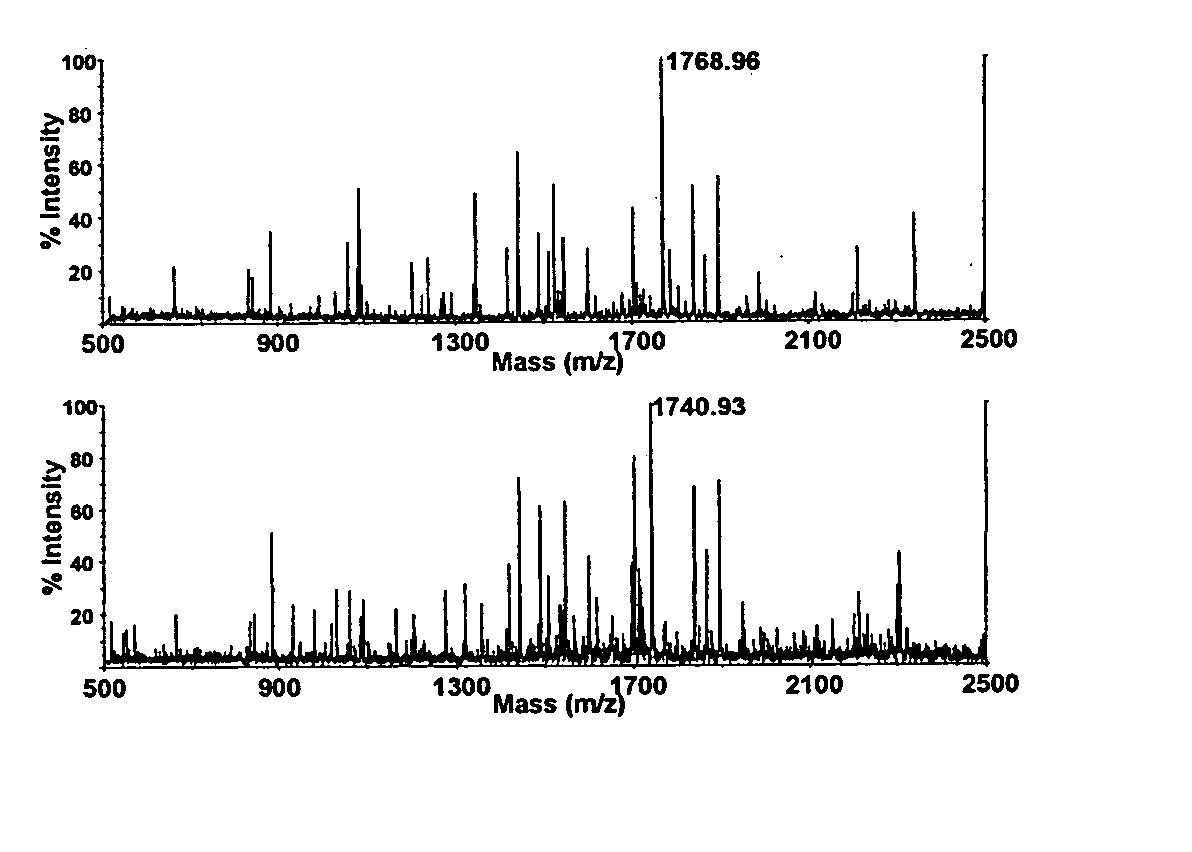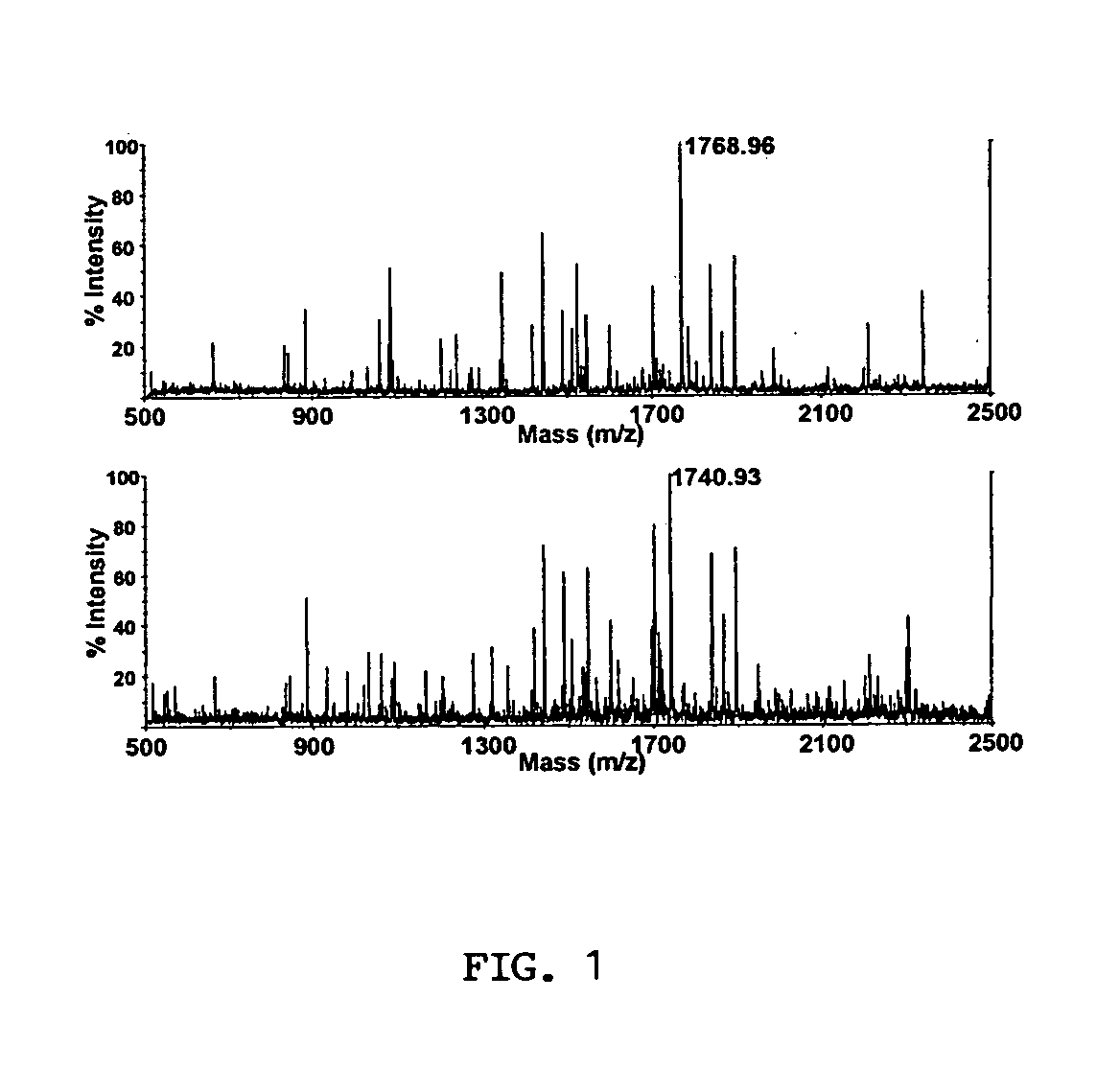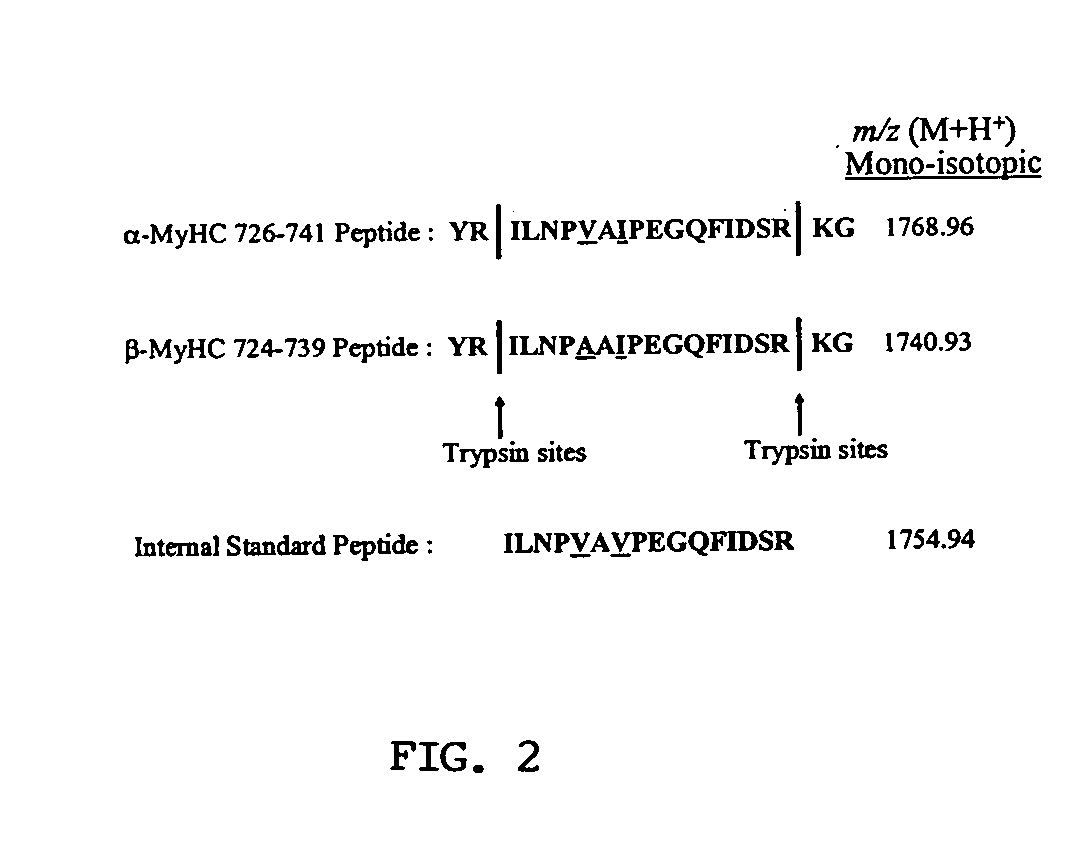Quantitative analysis of protein isoforms using matrix-assisted laser desorption/ionization time of flight mass spectrometry
a mass spectrometry and laser desorption technology, applied in the field of proteomics, can solve the problems of protein concentrations that cannot be amplified, proteins are difficult to work with than dna and rna, and many impediments in the study
- Summary
- Abstract
- Description
- Claims
- Application Information
AI Technical Summary
Problems solved by technology
Method used
Image
Examples
example 1
Materials and Methods
[0235] Preparation of MyHC from tissue. A panel of seven archived patient samples of normal human right atrium from organ donor candidates was provided by the Donor Alliance Organ Recovery System. Total myosin was partially purified from the tissue by the method of Caforio et al. (1992), as modified in Miyata et al. (2000). Tissue (50-100 mg) was ground under liquid nitrogen and homogenized in low-salt buffer (1 ml, 20 mM KCl, 2 mM KH2PO4, 1 mM EGTA, 1 mM 4-(2-aminoethyl)benzenesulfonyl fluoride hydrochloride (AEBSF), pH 6.8). The homogenates were centrifuged (2700.times.g, 10 min, 4.degree. C.) and the supernatants discarded. The pellets were re-homogenized in 1 ml of low-salt buffer and centrifuged as before. Pellets were suspended in high-salt buffer (0.25-0.50 ml, 40 mM Na4P207, 1 mM MgCl2, 1 mM EGTA, pH 9.5), incubated on ice (30 min), and centrifuged (20,000.times.g, 20 min, 4.degree. C.). The supernatant containing the partially purified myosin was collec...
example 2
Results
[0248] A. Measuring Protein Isoform Ratios by MALDI-TOF MS
[0249] Selection of isoform specific quantification peptides. The presence of two isoforms in the MyHC gel band from Coomassie stained NuPage gels was confirmed by peptide mass fingerprinting. While approximately three quarters of the peptides matched both .alpha.- and .beta.-myosin heavy chain, the remaining peptides were specific to one or the other isoform. This confirmed that the band contained a mixture of both isoforms. The sequences of .alpha.- and .beta.-MyHC were examined to find a pair of tryptic peptides, one from each isoform, which would be suitable for MALDI-TOF MS quantification. Suitable peptides, in theory, should be similar in sequence, be discriminated by mass, and should generate a strong MALDI-TOF ion current. Ideally, the peptides should have identical trypsin sites so that they are both produced without discrimination by tryptic digestion. Further, it is also important that their chemistry should...
PUM
| Property | Measurement | Unit |
|---|---|---|
| detectable mass | aaaaa | aaaaa |
| molecular weight | aaaaa | aaaaa |
| mass | aaaaa | aaaaa |
Abstract
Description
Claims
Application Information
 Login to View More
Login to View More - R&D
- Intellectual Property
- Life Sciences
- Materials
- Tech Scout
- Unparalleled Data Quality
- Higher Quality Content
- 60% Fewer Hallucinations
Browse by: Latest US Patents, China's latest patents, Technical Efficacy Thesaurus, Application Domain, Technology Topic, Popular Technical Reports.
© 2025 PatSnap. All rights reserved.Legal|Privacy policy|Modern Slavery Act Transparency Statement|Sitemap|About US| Contact US: help@patsnap.com



